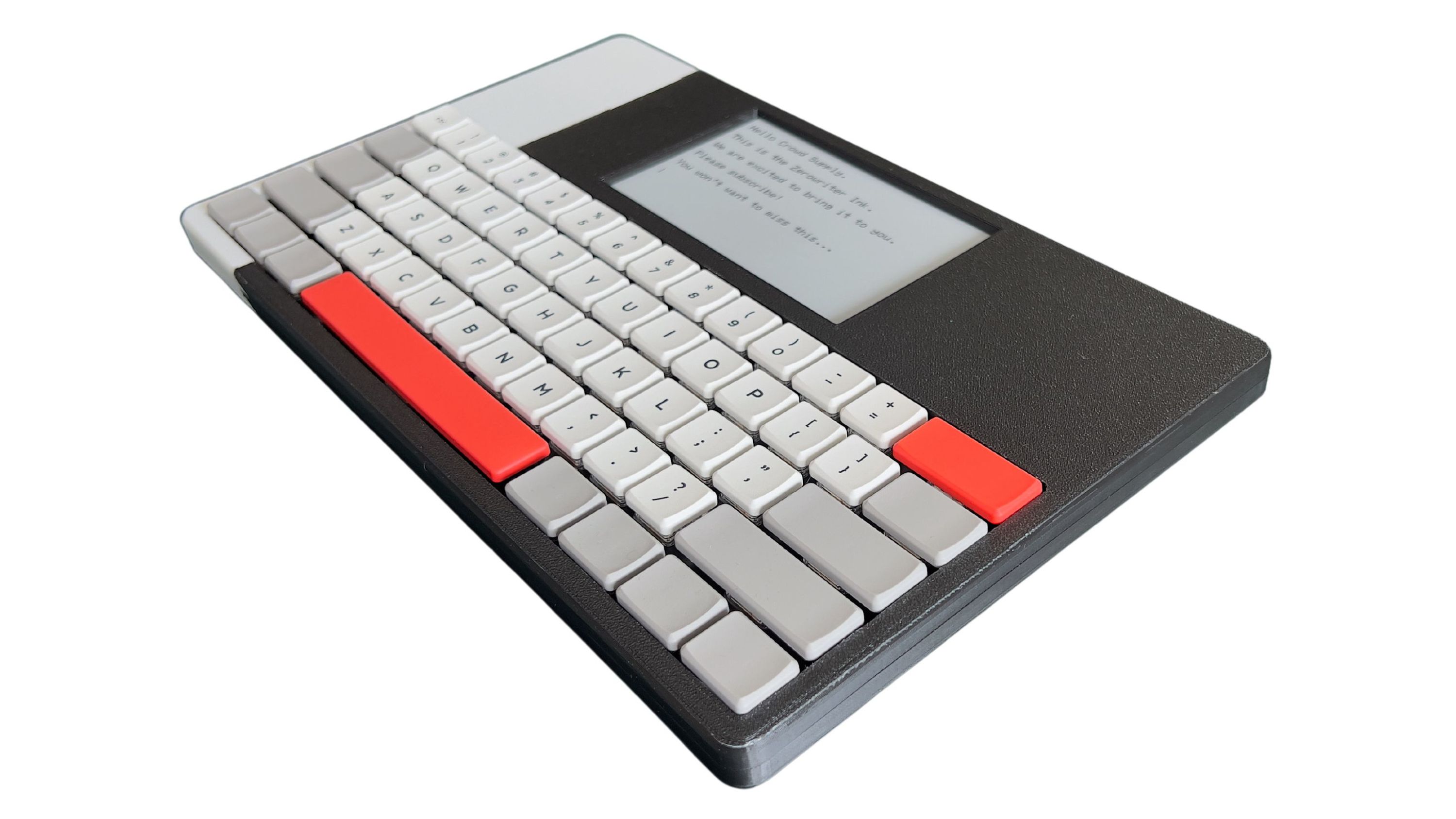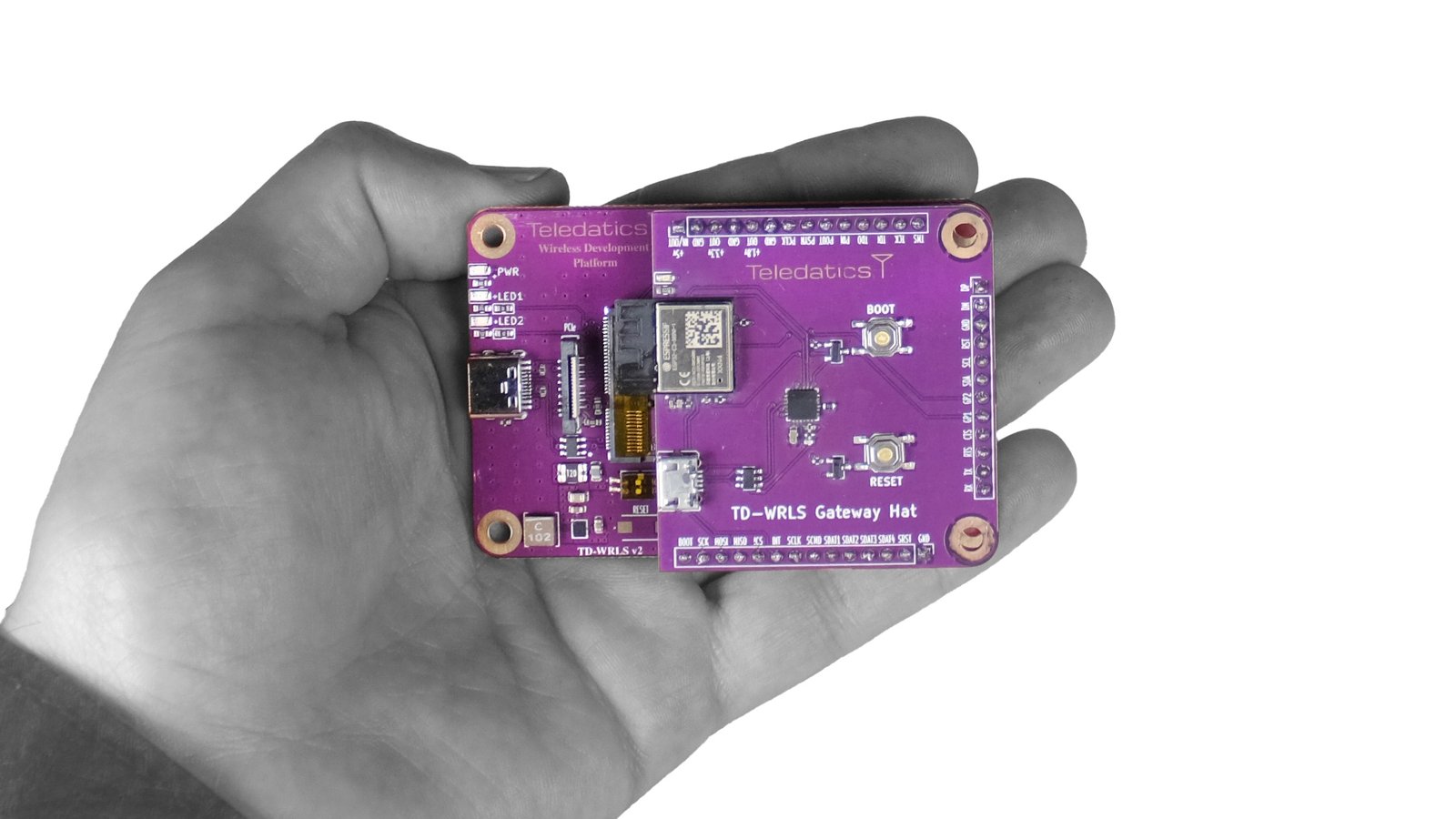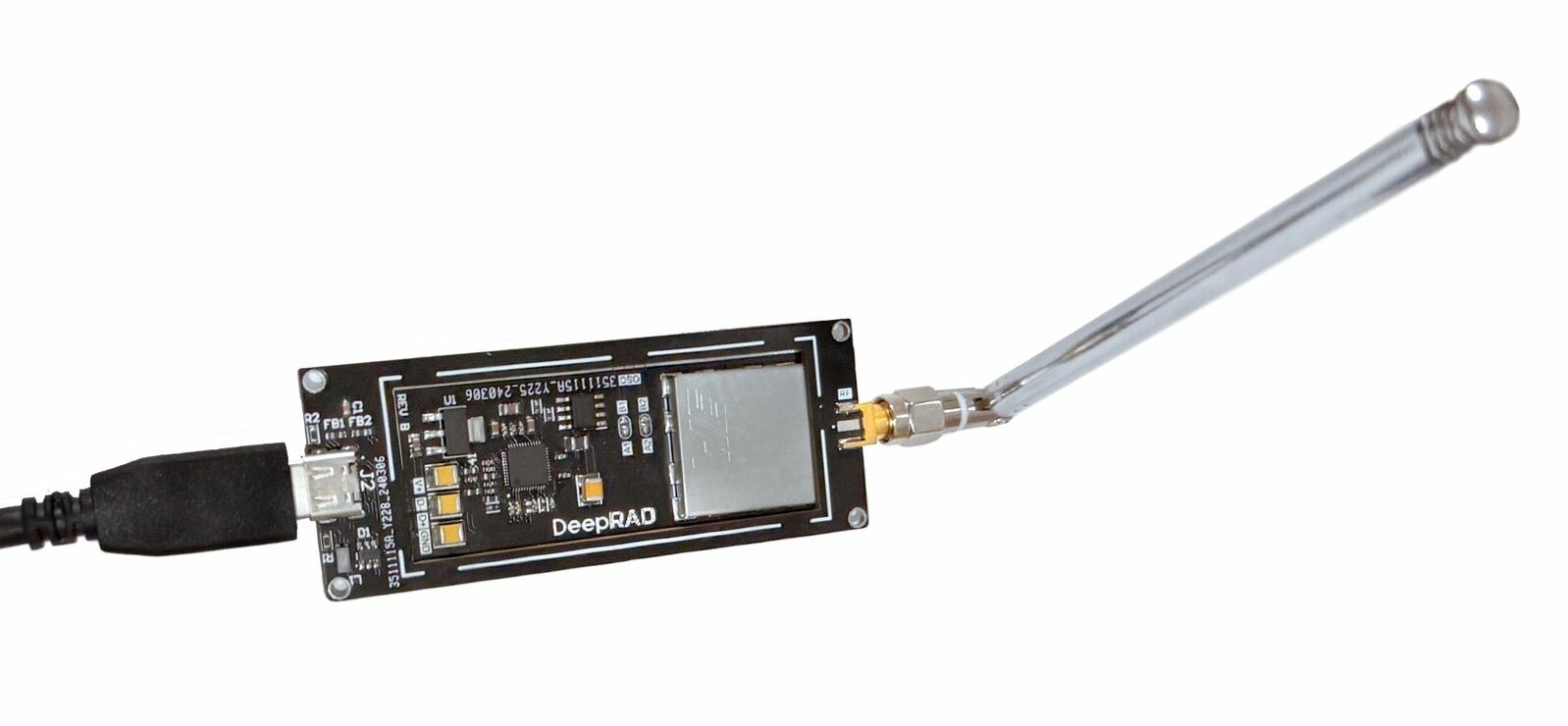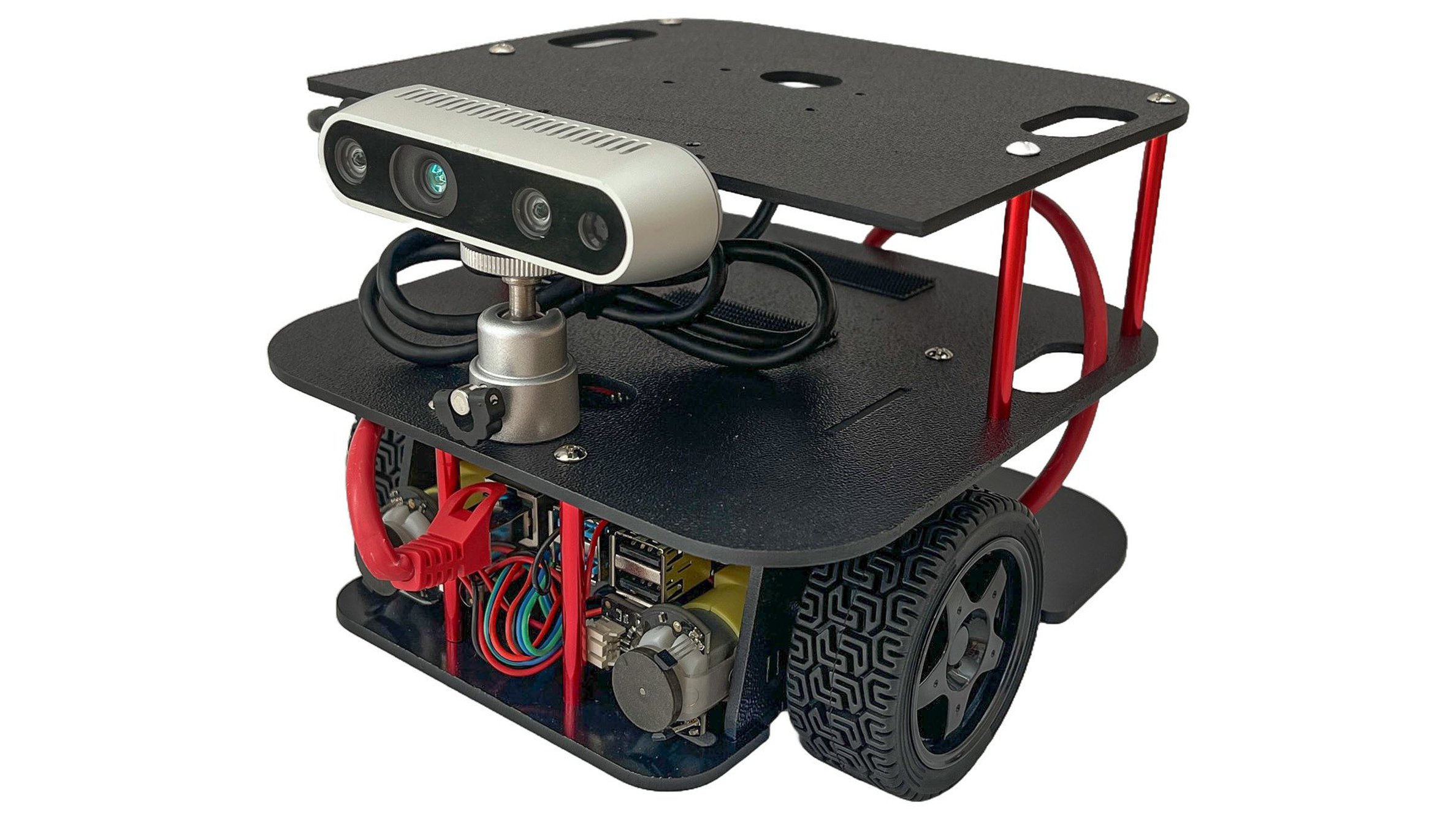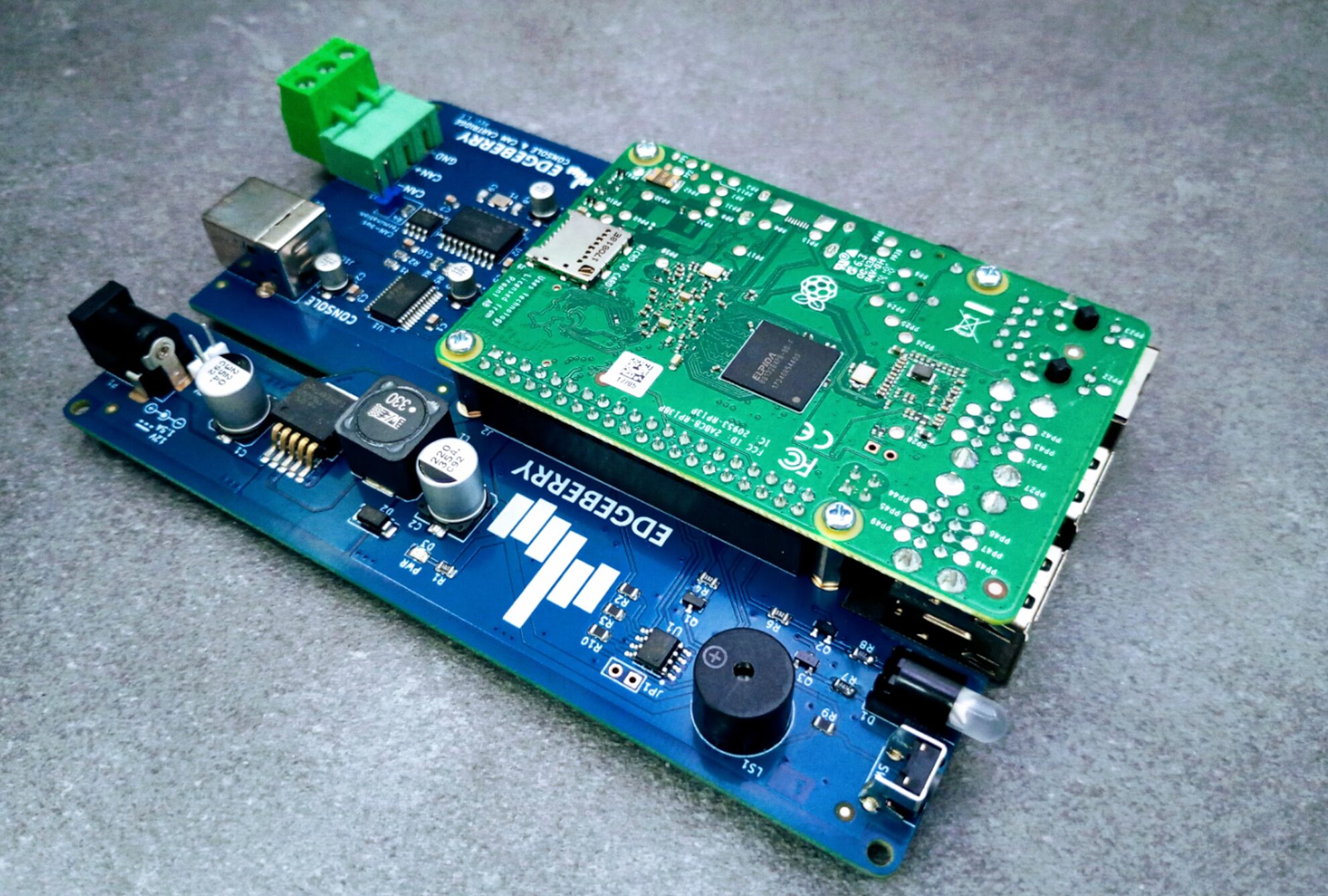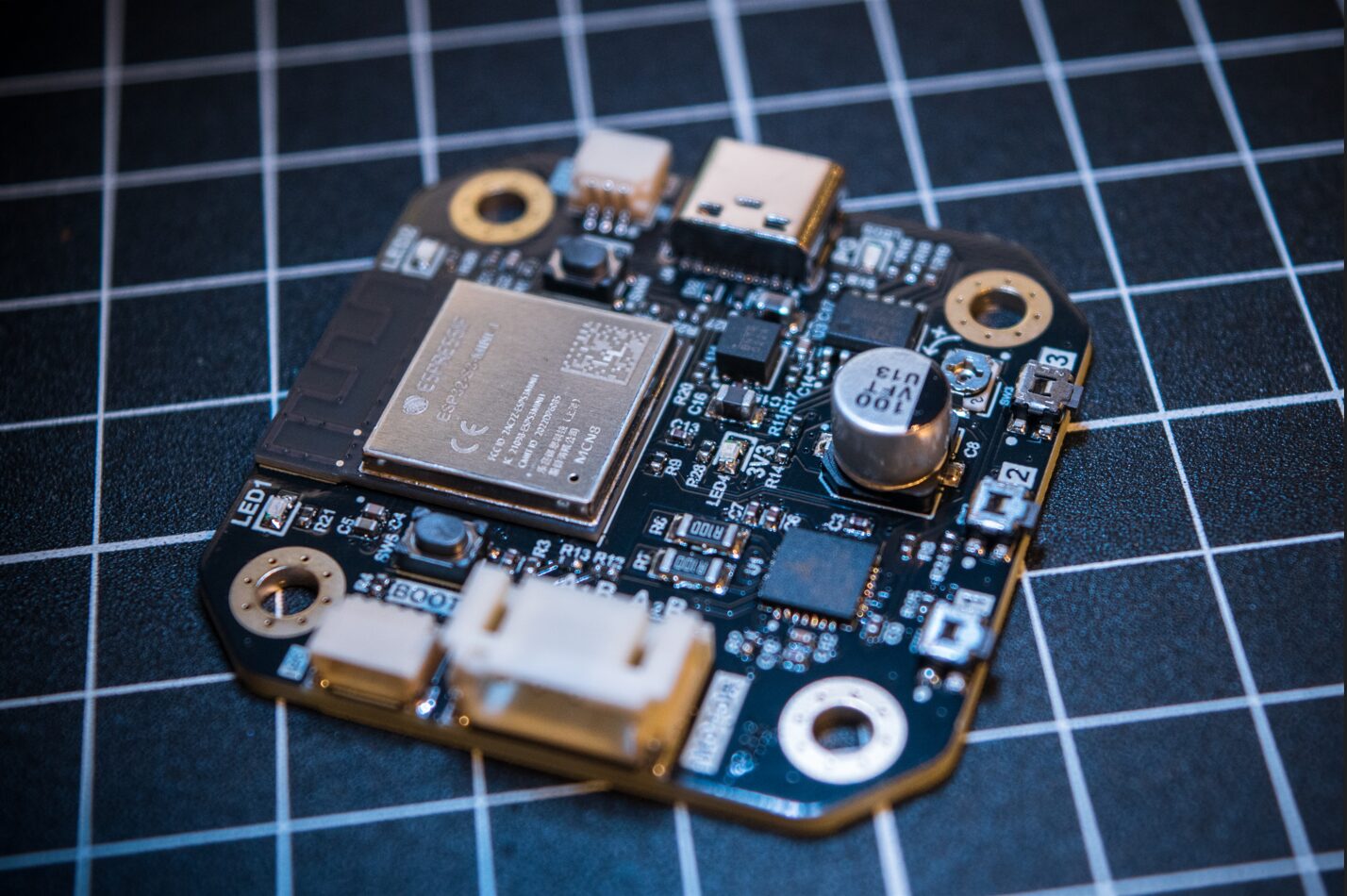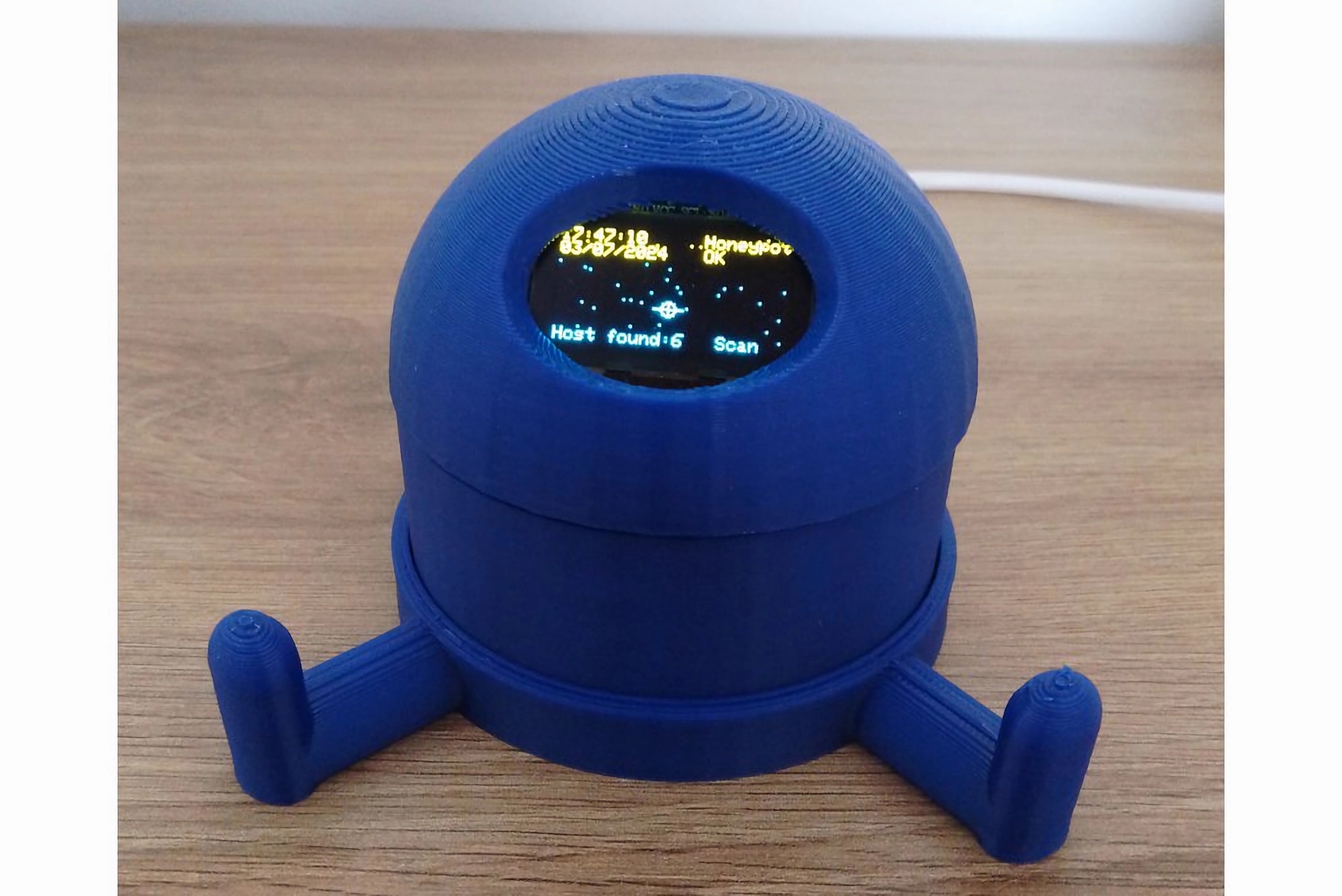Zerowriter Ink is an e-paper word processor for writers interested in an open-source, distraction-free writing tool built around the ESP32-S3 wireless microcontroller. It features a customizable, mechanical keyboard with low-profile Kailh Choc switches and a second-edition Inkplate 5 e-paper display from Soldered Electronics. The Zerowriter Ink is a compact, dedicated writing tool that can be tossed in a backpack and taken on the road. It is designed as an open-source, customizable alternative to other portable word processors like the Alphasmart Neo and the Pomera DM30. It builds on the first ZeroWriter project but comes fully assembled. The keyboard is hot-swappable, with a US-English layout and printed legends. The onboard Inkplate 5 e-paper display is powered by an ESP32-S3 microcontroller with support for Wi-Fi 4 and BLE 4. It also comes with a 5,000mAh LiPo battery that can last for several weeks of daily use or a month of standby on […]
Teledatics HaloMax Wi-Fi HaLow LGA or M.2 module supports over 1000 clients, have been tested at a 100+km range (Crowdfunding)
Teledatics has launched a crowdfunding campaign for the TD-HALOM HaloMax Wi-Fi HaLow module available in LGA and M.2 form factors for long-range and low-power connectivity, as well as HaLow development boards based on the module and various daughterboards for expansion. The wireless module, powered by Newracom’s NRC7394 SoC, is the product of a collaboration between Newracom and Teledatics. According to Zac Freeman, VP of Marketing & Sales at Newracom, the HaloMax module is “the highest output power Wi-Fi HaLow module available on the market. The Teledatics TD-HALOM module transmits at the highest allowable FCC power output and offers a Maximum Range HaLow solution.” Earlier this year, Teledatics broke the record for the longest distance for a Wi-Fi HaLow connection using the HaloMax wireless module and TE Connectivity Yagi antennas. Two Raspberry Pi 4 Model B units were able to communicate over a distance of 106km between Mount Greylock and Mount […]
DeepRad is a cheap, modular SDR receiver based on the RTL-SDR (Crowdfunding)
DeepRad is a software-defined radio (SDR) receiver built in the RTL-SDR form factor. The modular SDR receiver offers advantages over other RTL-SDR-based devices which make it easier to integrate with other components and build custom solutions for your specific applications. The DeepRad SDR receiver is based on the RTL-SDR dongle and features the same Realtek RTL2832U demodulator chip with an R860T tuner. The module features D+ and D- pins for USB connection, V+ for 5 V power supply, solderable jumpers for oscillator selection, an RF pin for antenna connection, and 8 shield pin connectors for shielding and support. The module is targeted at custom designs, with the user free to choose the best components for their application. It is as versatile as a typical SDR receiver, with applications ranging from FM radio listening to aircraft tracking. We have previously covered other RTL-SDR receivers, such as the KrakenSDR and the RTL-SDR […]
The Epi C3 is a tiny ESP32-C3 development board with USB-C and an onboard antenna
The Epi C3 is a small development board based on the Espressif ESP32-C3 microcontroller with a USB-C connector for power and programming and an onboard ceramic antenna for wireless applications. We have previously covered several tiny ESP32-C3 development boards such as the Microflex series, ESP32-C3-0.42LCD, the XIAO ESP32C3, and LOLIN’s C3 Mini and C3 Pico. The Epi C3 claims the title of the “smallest ESP32 dev board with USB-C and an onboard antenna.” It uses a Johanson ceramic antenna with a “surprising range for its size” and the USB-C port is sunk into the board to reduce footprint. The ESP32-C3 microcontroller on the Epi C3 board is much more powerful than the 8-bit AVR chip on its predecessor, the Epi 32U4. The Epi C3, however, retains many of the older board’s protective features, including TVS diodes on the USB data lines and power input, a 500mA on the USB power […]
MIKRIK V2 Robot Car is an entry-level, open-source robotics kit built for ROS and 3D computer vision
The MIKRIK V2 Robot Car is an open-source robotics kit for studying 3D computer vision and is compatible with both ROS1 and ROS2 software suites. The two-wheel-drive robot is powered by a Raspberry Pi 4 Model B (as a ROS1 differential drive controller) and a more powerful x86 or ARM single-board computer that can support ROS2 applications like the LattePanda Delta 3, Intel NUC, or NVIDIA Jetson Nano. The robot car uses the Intel Realsense D435i camera for 3D depth vision. It is a less expensive alternative to the iRobot Create, Husarion, and TurtleBot, and compares favorably with NVIDIA’s open-source JetBot AI robot platform. The robot car’s chassis is squared-off and made from shatterproof flex plastic. The CAD files are available on GitHub for self-assembly using a laser cutter and a 3D printer. The assembly and setup process is documented on the Hackster project page. On the software end, it […]
Edgeberry allows you to build and manage Raspberry Pi IoT Edge devices
The EdgeBerry is an open-source platform that comprises a base board, hardware cartridges, and software for building Raspberry Pi IoT Edge solutions designed by Belgium-based maker, Sanne Santens. The Edgeberry Base Board is the primary printed circuit board that connects all the other components to the Raspberry Pi. While it is not a HAT (Hardware Attached on Top), it plugs into the GPIO header on the Pi and provides certain interfaces and features that make it easier to use your Raspberry Pi as an IoT Edge device and deploy it in the real world. Unused GPIO pins are exposed on the expansion slot for Edgeberry Hardware Cartridges. Edgeberry Base Board specifications: 40-pin GPIO connector for interfacing with the Raspberry Pi Expansion slot for connecting Edgeberry Hardware Cartridges Misc – Buzzer, Bi-color LED, Button 3A step-down converter 12V DC power jack A unique advantage of the Edgeberry platform is the ability […]
Integrated motor driver and controller bundles ESP32-S3 and TMC2209 for IoT applications
The PD Stepper is a NEMA 17 integrated stepper motor driver and controller board powered by USB power delivery that combines an ESP32-S3 wireless microcontroller, the Trinamic TMC2209 ultra-silent motor driver, and other components onto a single board for Smart Home and automation applications. The maker, Josh R., states that the PD Stepper isn’t another “just because we can” project. It addresses the need for an integrated motor driver and controller module that can used in compact or space-constrained designs. The ESP32-S3 SoC controls the other components on the board and provides wireless connectivity as well as access to development tools and libraries such as ESPHome and ESP-Now. The motor driver IC, Analog Devices’s Trinamic TMC2209, offers efficient, noiseless control of two-phase stepper motors. Other onboard components and connectors include an AS5600 magnetic rotary position sensor, a 3.3V buck converter, a Qwiic/Stemma QT connector, a motor connector, and an AUX […]
ESP8266-powered Netgotchi network security scanner aims to protect your home network
The Netgotchi network security scanner is a simple, compact device based on an ESP8266 wireless microcontroller with a single goal: to defend your home network from intruders and potential bad actors. It is described as “Pwnagotchi’s older brother,” a network guardian that keeps your network safe instead of penetrating it. If you are unfamiliar with Pwnagotchi, it is an A2C-based (advantage actor-critic) “AI” that can penetrate Wi-Fi networks using WPA key material obtained from passive sniffing or de-authentication attacks. The Netgotchi is a reverse Pwnagotchi that alerts you to intruders or breaches in your network. It runs on a simple microcontroller and cannot employ reinforcement learning like the Pwnagotchi. Rather, it pings the network periodically and reports any new potential security threats. The device’s design is as simple as its purpose. It is an ESP8266 microcontroller connected to an OLED display and running an Arduino .ino script, enclosed in a […]


